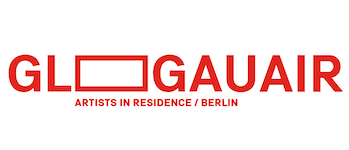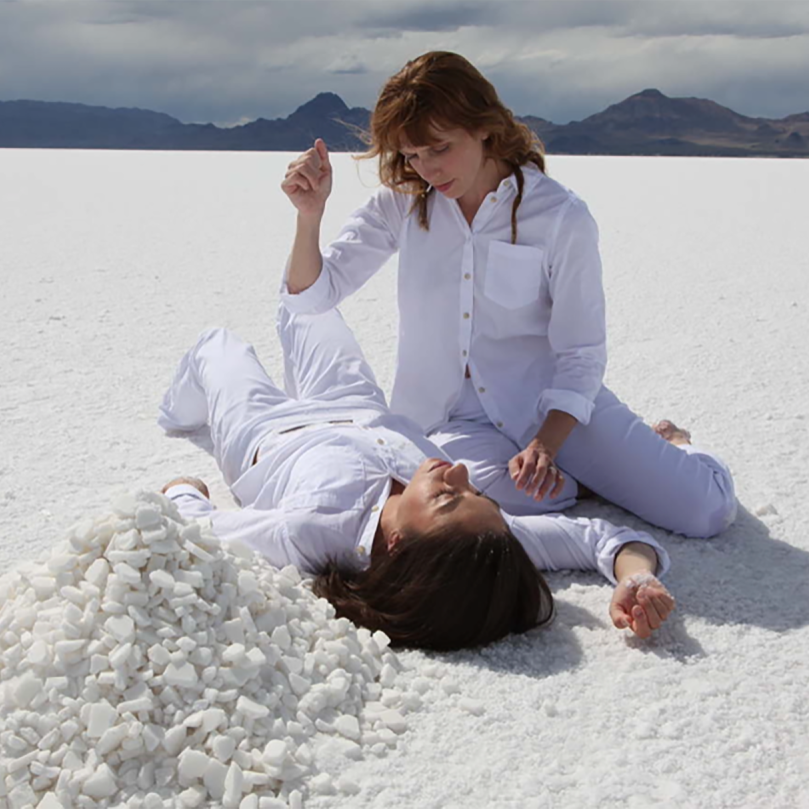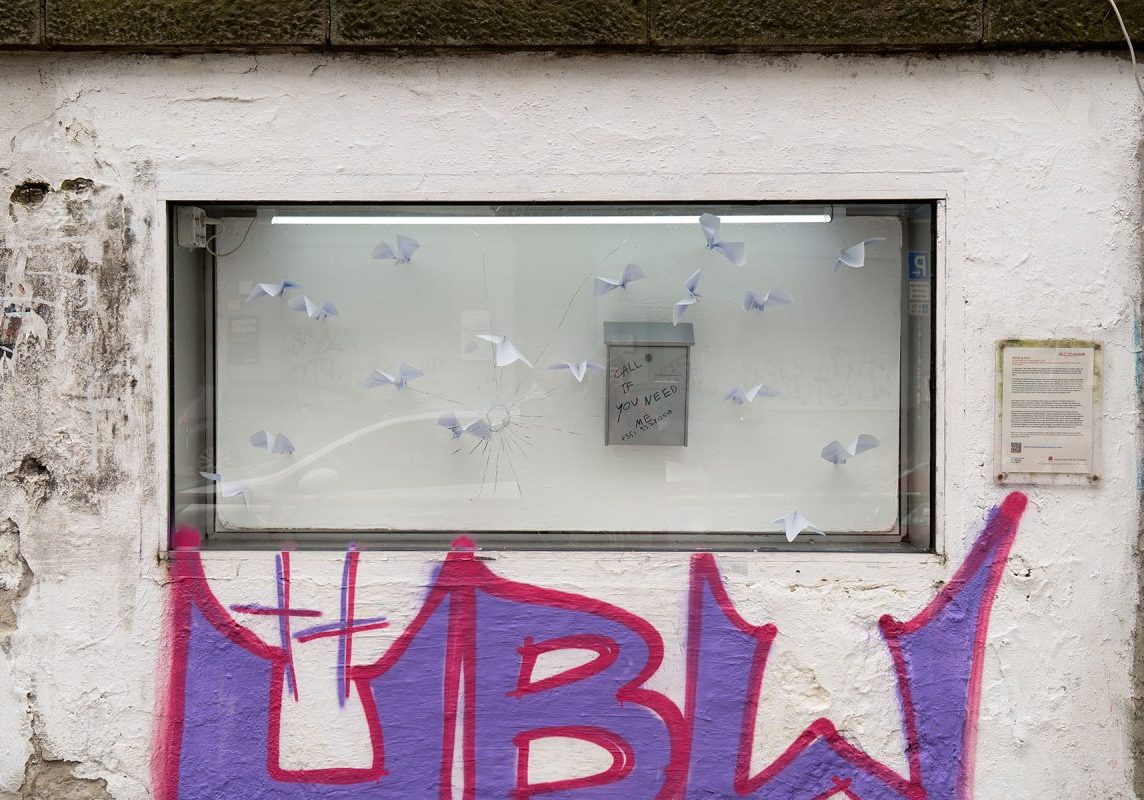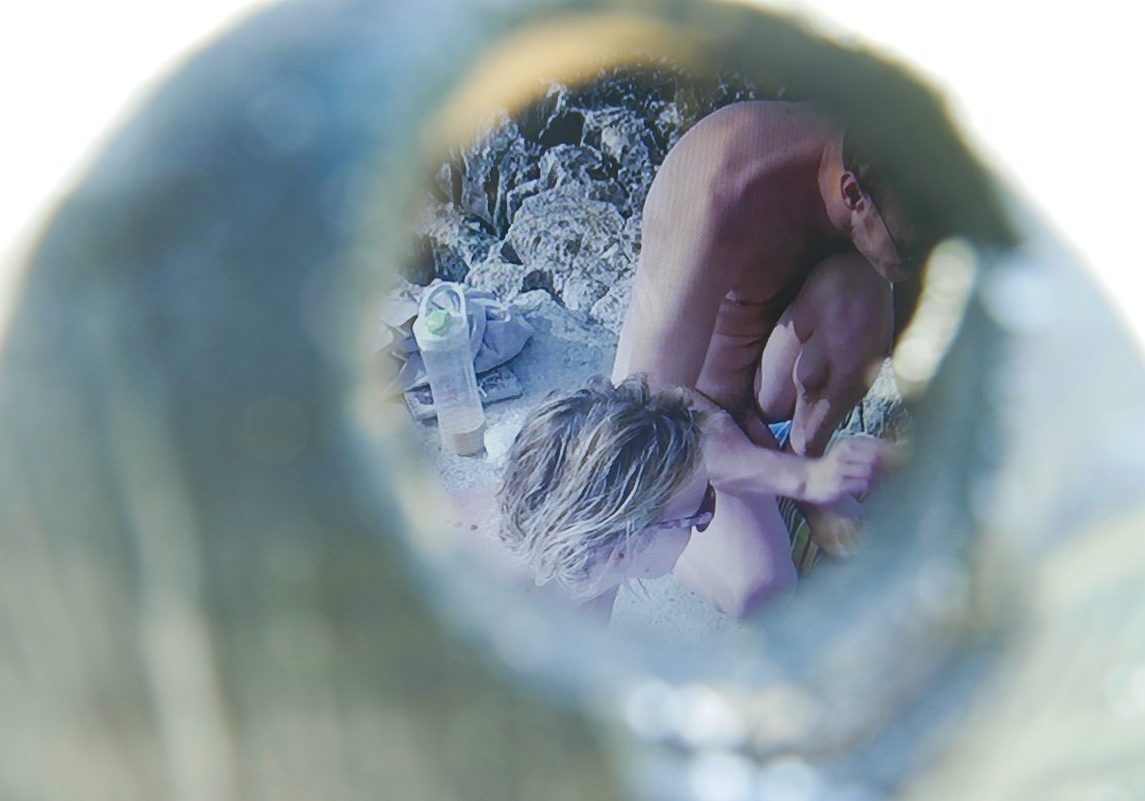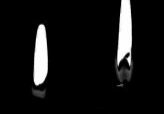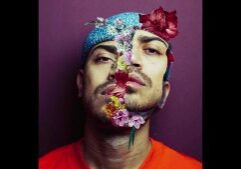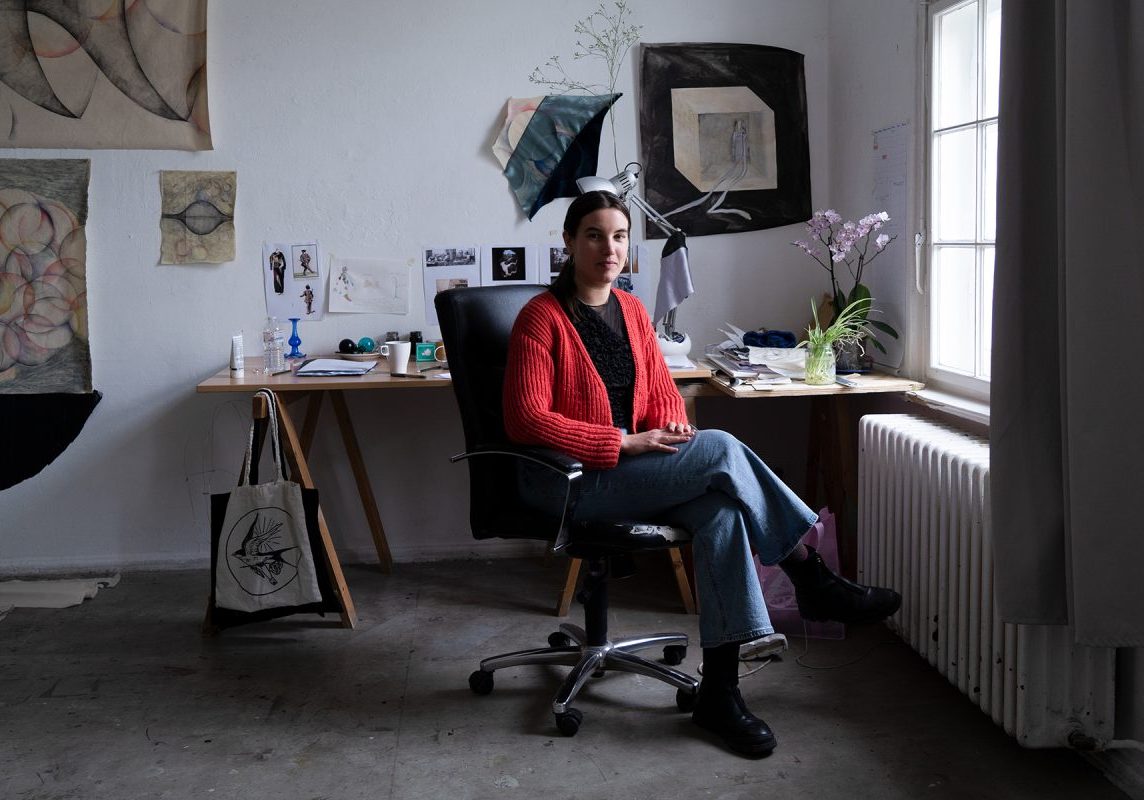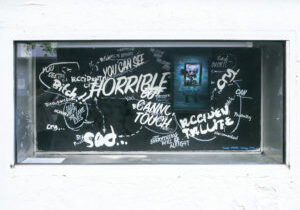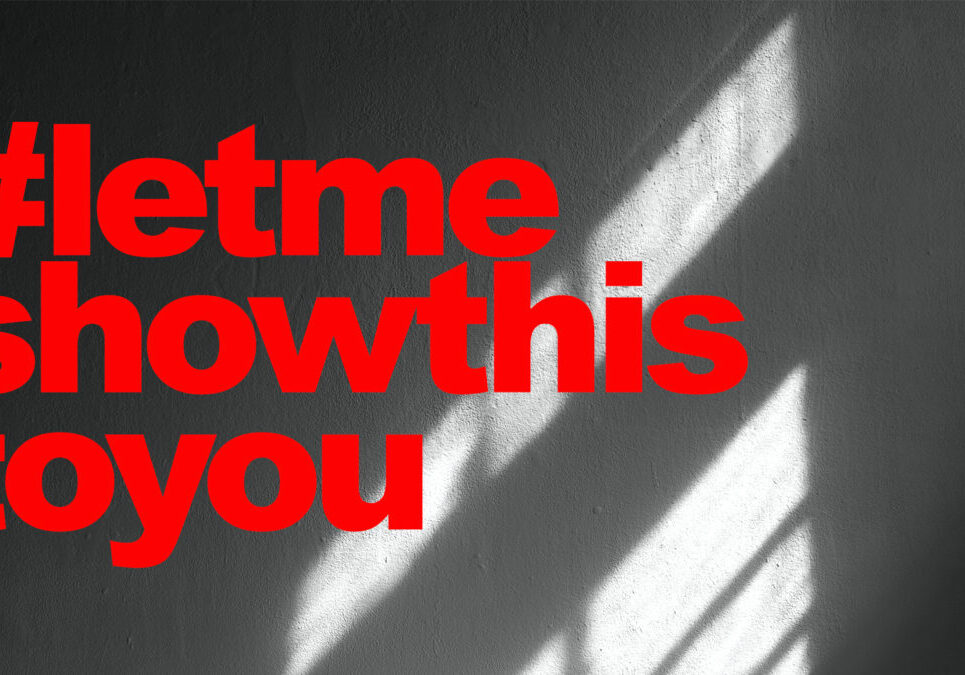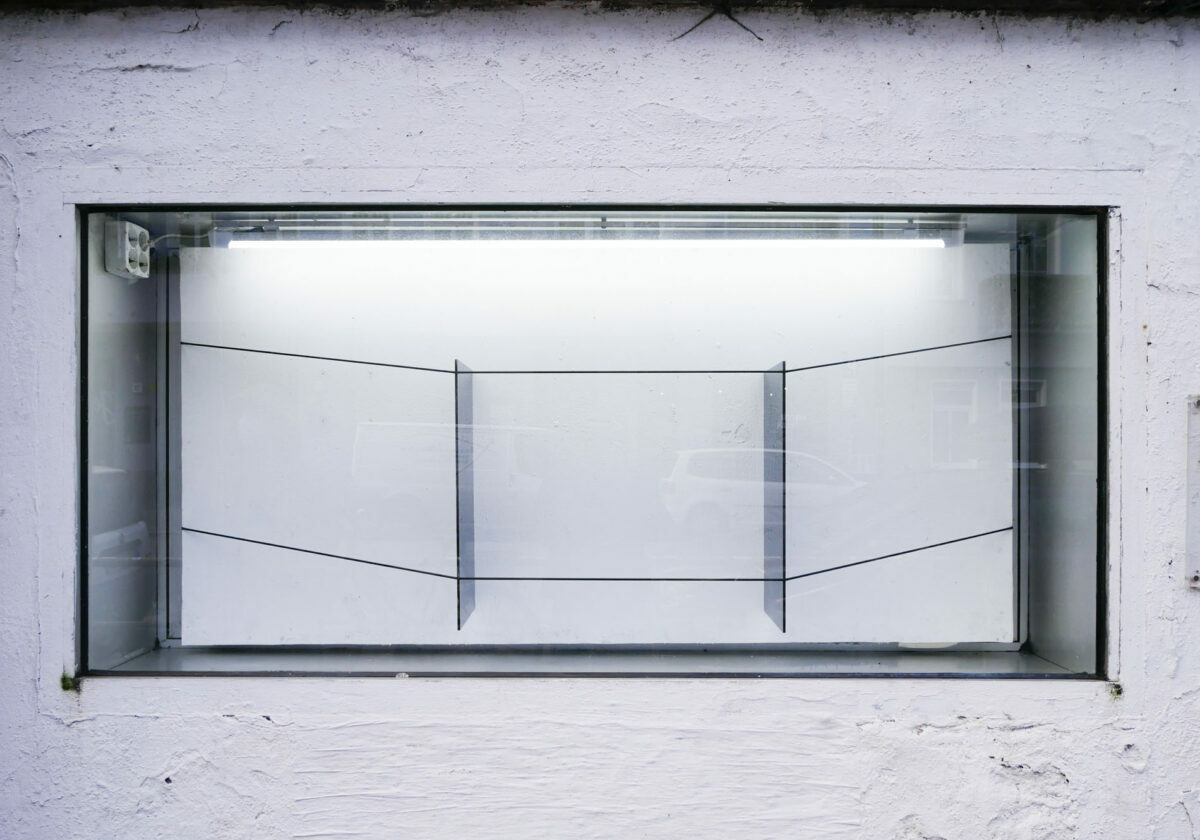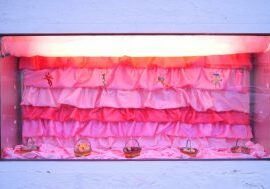Meet the Artist // gwen charles
gwen charles works focus primarily on video, photography and live performative actions, merging elements of reality and magical realism to reflect on the absurdity of daily life using handmade objects and costumes. She translates visceral bodily feelings into movement, capturing these through performance and video. charles’ past work explores themes of the Anthropocene, ecofeminism, and reconnecting with nature, using her body to express the female experience and the evolving needs of humanity.
Could you give us a little bit of an introduction to yourself and your background?
I’m gwen charles. I’m a multidisciplinary, conceptually-based performance artist. I’m from New York, and I have been working with video and live performance based work. I went to art school, at Parsons School of Design, in the Fire Arts department. I started my career as an artist as a figurative oil painter. I was really interested in capturing the body moving in space.
I had always used photography to create the imagery for my paintings, taking photographs of myself or photographing friends and using images from books and magazines, and then collaging them together to create tableaus to recreate on canvas with paint. The images were all about expressing an emotion in paint.
Unfortunately, I developed an allergy to solvents and paint while at art school. It was a huge blow to my career and my sense of self, because I was a “painter”. And then I asked “now who am I? What am I going to do if I cannot paint?”
And then I realized that those photographs could be the artworks themselves. I started to distill down what the artwork was really about. I ask, “What does the work want to say?”
It was still about capturing the body in space, expressing an emotion, but I was no longer tied to a particular medium. So now my work is multidisciplinary and multimedia. What medium can best express this emotion or idea? The expression is the focus. The medium becomes secondary.
Right now I’m working with themes of rest and comfort, and the desire to find comfort myself. After a long period of caretaking for family members and the need to find comfort for myself I have been drawn to use bedding, which I see as a symbol of comfort, and has led me to want to make blankets and pillows. So I’m actually fabricating different objects that are blankets or pillows to use in these performance-based projects.
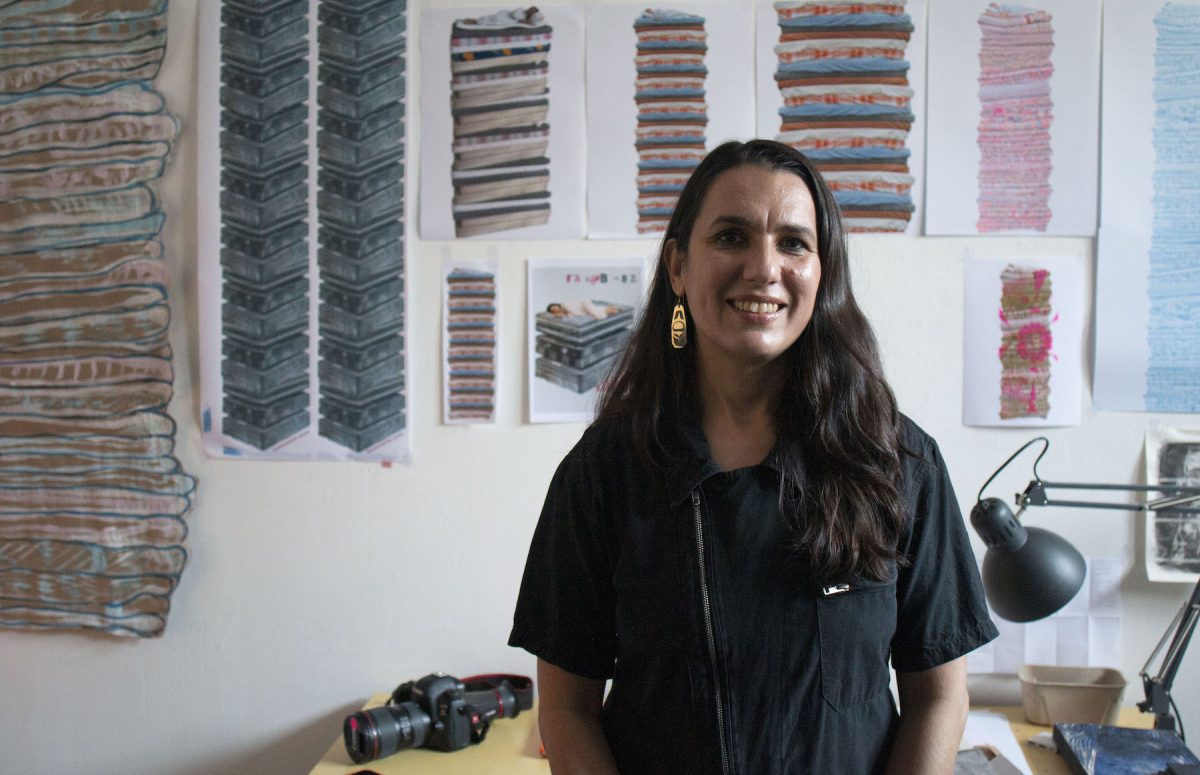
Under the scope of multidisciplinary art, I know it didn’t immediately start with themes of rest. I want to know, what themes did you start out with, and how did that develop and fluctuate? What other ideas did you play with before you got to this one?
I’ve been working within performance art since the early 90s, wanting to express my emotions in relationship to other people. So how do I express the connection between two people? One of my first series of performances was a costume that connected two people that was 60 yards long, and I wanted to illustrate the invisible thread that’s between us and show that in some way. Making costumes and objects to support the performance is part of my practice so there is still object-making within my studio practice.
I’ve always been curious about how to make the invisible connections and relationships between people and things visible, and how to picture the expressions of my feelings about the world.. Even in the current works that I’m making about rest, like the last series that I made using felting, they are also talking about these invisible connections between people. I made a series of felted blankets, combining several types of fabrics together without thread or glue. They’re just held together by the tangling of the threads in each fabric intertwined
together. This tangling of threads is kind of how I see our connections to each other in this world. We come in contact, cross each other and tangle with each other with no binders to keep us together.

So there’s always been an underlying theme of intimacy with yourself and with other people.
Yeah, it’s all about a relationship between us all, and seeking out human connection, because isn’t that what it’s all about? What joy to find a sense of kinship and fullness through connection with others, to receive inspiration from the people and the world around you.
How has Berlin been influencing your practice? How have you been finding inspiration around the city?
I love working site-specifically and context-dependent. As I work with themes of rest and comfort here in Berlin, some of the ideas that I was working with at home are slightly different. The idea of trying to find rest, forcing yourself to rest, reminding people to rest and using the arts as a way to talk about our lack of rest is a very different conversation in Europe. I feel like Europeans already know how to rest. They already know how to take a leisurely lunch, to relax and have a glass of wine.how to take a long walk and enjoy themselves.
Some of the questions that I have with my new project, where I am resting in the street, are about how a country with such great emphasis on care and social services still has people that are homeless. We all want to feel a sense of safety and security and be able to rest and feel comfortable. So, that has been a project that I’m doing in different cities and each city does have a different feel to it. San Francisco, New Orleans and New York also have very high homeless populations, so this topic has started to come up for me as I move through different cities and perform this act of rest in public.
The city has much more green space than other cities do. There’s definitely a focus on being outside in nature, there’s homeopathy and herbalism here. I started to research what magic is here within nature? There is a history of chemistry here. There’s a history of alchemists and trying to make gold out of everything. The first man-made chemically based pigment was created here, Prussian blue was invented here. I was fascinated with that idea of materials that are very local. I’m thinking, how can I use that in my work here? How can I bring that blue in?
I’ve been making these collages of mattress stacks that sort of replicate the look of the fairytale The Princess and the Pea. I took all the available mattresses at GlogauAIR in the basement and I stacked up the mattresses to make photographs and collages, then imported them into Photoshop and made the stacks really, really tall. Like in this image, as I stack these mattresses and stack these quilts, they get taller and taller and instead of being more comforting to have more quilts or more blankets or more mattresses, it actually makes it more precarious.
The other series I’ve been working on is also the body print that is left on the bed. And the remainder of the body. So, the person has left the bed, whether it’s you or a partner, and trying to show the imprint of the body. I’ve been playing with that idea with the absent body.
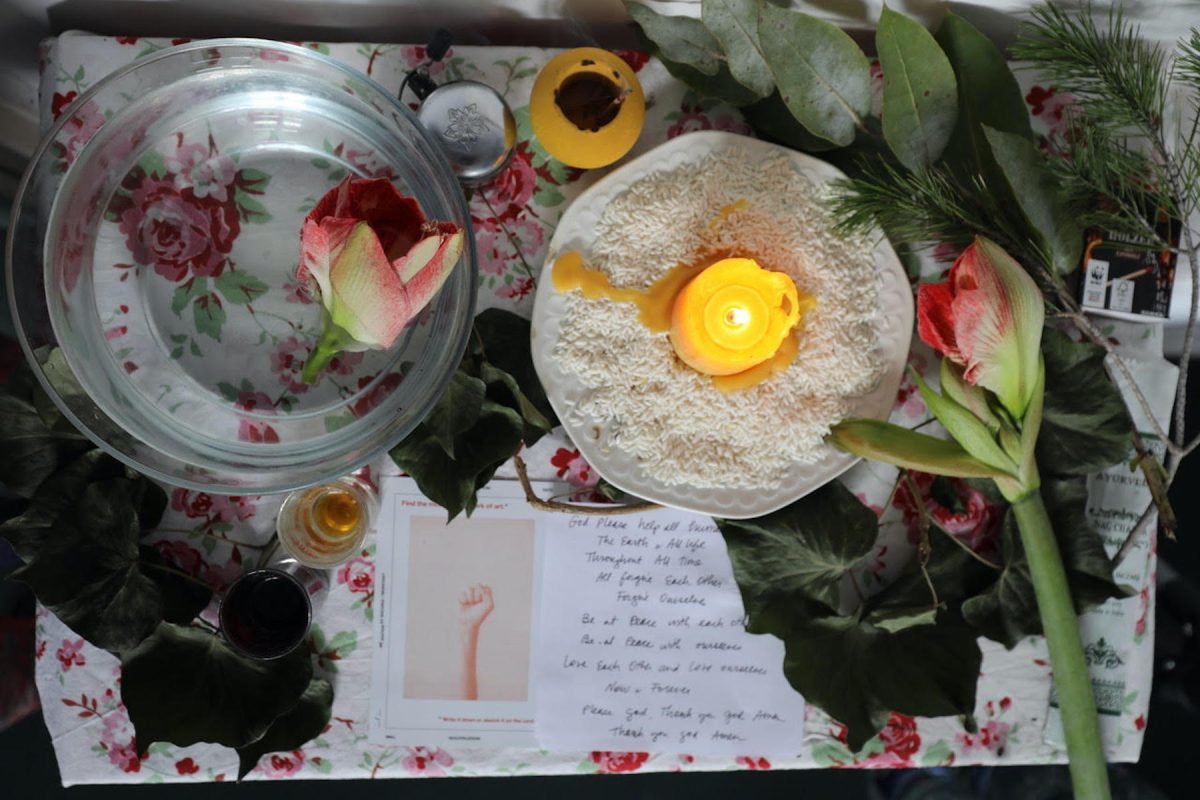 “What if I honored my creativity as a spiritual practice?
“What if I honored my creativity as a spiritual practice?
Crafting an altar in my studio reminds me to celebrate this gift of creation from my ancestors and the universe.”
So you’re really immersing yourself in the things that make Berlin, Berlin. What do you think you’ll do after this residency? Will you go to a new European city?
Yes, I’d like to continue this project of resting in public in other cities. I’m hoping to go to Copenhagen next week, and see what would be very unique about resting in Copenhagen. I’ve been resting in all the places that are very Berlin, like the Berlin Wall, the canal, resting on the streets next to graffiti. I’ll see what will be unique about other cities and the Rest in Public project will continue.
